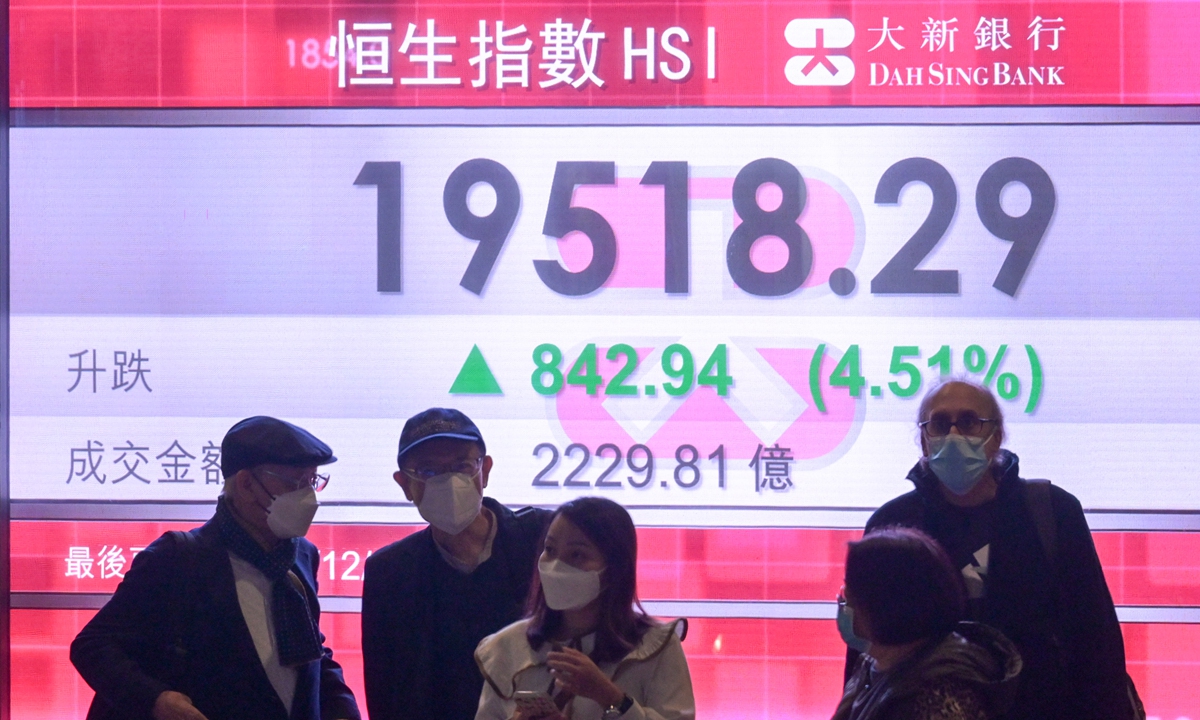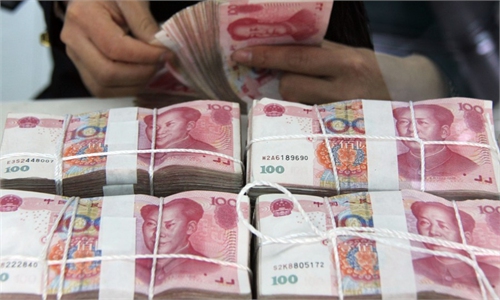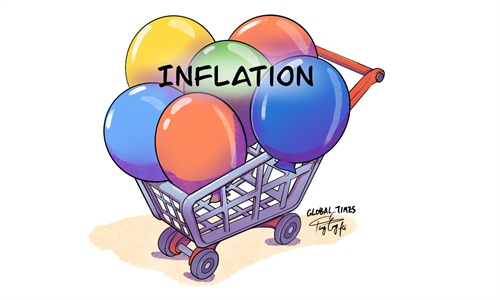
HKEX December 5, 2022 Photo: cnsphoto
Chinese assets staged a powerful rally on Monday, with the flagship Shanghai Composite Index regaining the 3,200 level last seen in mid-September, and the yuan strengthening past the psychologically important level of 7 per US dollar.The strong comeback, buoyed by a supportive monetary policy and a flurry of moves across the country to optimize COVID-19 prevention and control measures, is indicative of an upturn in economic expectations and the rising appeal of yuan assets, market watchers said, predicting a continued revival in investor sentiment.
China still has ample leeway in its monetary policy, they stressed, calling attention to a coordinated macroeconomic push to ready the economy for potential headwinds amid an estimated global recession next year.
Huge day
Monday was apparently a huge day for Chinese assets across the board. The benchmark Shanghai index posted a 1.76 percent gain to close at 3,211.81 points. The previous time the index was at the 3,200 level was on September 15.
The benchmark Hang Seng Index in Hong Kong jumped 4.51 percent while the Hang Seng TECH Index soared 9.27 percent.
The Chinese yuan, for its part, strengthened past 6.95 versus dollar intraday in both onshore and offshore markets. The yuan hovered around the 7 level over the previous trading day on Friday.
Behind the pronounced uptick in the yuan's value is a turn for the better in economic expectations and the rising appeal of yuan assets, said Chang Ran, a senior analyst at Zhixin Investment Research Institute.
A lack of momentum for the dollar's continued strength as the market is pricing in an expected softening pace of rate hikes by US Federal Reserve also eases the depreciating pressure on the yuan, Chang told the Global Times on Monday.
The market is increasingly turning bullish and international capital has over the past two weeks moved to increase their holdings of Chinese assets while offloading dollar assets correspondingly, according to Chang. Net capital inflows into the Chinese mainland equity market via the stock linkups between the mainland and Hong Kong bourses have hit 75.6 billion yuan ($10.88 billion) since November.
The stellar gains on the Monday, when a 25-basis-points (bps) universal cut in reserve requirements for financial institutions entered into force, came amid announcements by an increasing number of localities to improve coronavirus response.
East China's Jiangxi Province said Monday that nucleic acid testing won't be carried out on a regular basis, effective 6 pm Monday, except for people in key positions such as epidemic control personnel. Negative test results are no longer required for public transport and entry into compounds, parks and scenic attractions, malls and supermarkets and hotels.
In so doing, Jiangxi has joined Shanghai and East China's Zhejiang Province, among other places that have moved to implement flexible measures in the wake of the country's updated COVID-19 control protocols and 20 optimized measures for combating the epidemic.
Such optimization, adding to a slew of pro-growth policies - notably a robust set of measures to revitalize property financing - is seen making the case for reviving the glamor of Chinese equities.
Economic fundamentals that are stabilizing and turning for the better are a necessary underpinning to kick off an upward run between the year-end and early next year. An accommodative monetary policy also contributes to an uptrend expected to continue into the next year, Chen Mengjie, chief strategist with Yuekai Securities, said in a note sent to the Global Times on Monday.
Additionally, a turnaround in property sector policies helps in propping up the economic stabilization and recovery, read Chen's note, identifying a market bottom that's clearly on path for a revival in the future.
In the latest attempt depicted as the "third arrow" in the quiver of the regulators to revitalize the housing market, the Chinese securities regulator announced last week the resumption of mergers and acquisitions (M&As) by real estate developers and refinancing by listed developers, among other new measures that let listed developers tap the capital market to ease their funding woes.
Such good news arguably reverberated across foreign investors looking to Chinese equities.
Morgan Stanley lifted Chinese stocks to overweight in a note dated Sunday, an upgrade from an equal-weight position the brokerage had held since the beginning of 2021, Bloomberg reported Monday, describing the upgrade as among "a growing chorus of Wall Street banks that are sanguine on the nation's outlook."
In another sign, Rene Buehlmann, chief executive for Asia Pacific in Singapore at UK-based money manager abrdn Plc, said, "I do believe Chinese equity valuations are undemanding to say the least."
Now is a great time to invest in Chinese stocks, according to Buehlmann, Bloomberg reported in a separate report on Monday.
Cautious optimism
The marked improvement in investor sentiment still doesn't suffice for market observers to drop their guard when it comes to calibrating economic policymaking for the coming year. Their optimism on the economic and currency trends are mixed with a cautious stance though.
On the optimistic side, the yuan is likely to trend stable and see small gains in 2023, Chang said, anticipating a stronger yuan to mostly rest upon real-world data that attests to the domestic economy rebound.
The downside pressure on the US economy over next year means that the Fed's monetary tightening would be tapering, the analyst said, speaking of a weaker dollar-induced devaluing pressure on the yuan.
Nonetheless, a grim global outlook necessitates a more comprehensive assessment of potential challenges and sufficient consideration as regards responding to such challenges, Dong Ximiao, chief researcher at Merchants Union Consumer Finance Co, told the Global Times on Monday.
The global economy might see a wide-ranging slowdown in 2023 as the IMF revealed in its global growth forecasts in October. Countries accounting for roughly one-third of the world economy will likely post a contraction this year or the next year, said the IMF.
Dong expects the monetary policy to play its part in more effectively funneling liquidity into the real economy and households.
More specifically, he believes that the weighted average reserve requirement ratio (RRR) that currently stands at 7.8 percent remains at high levels and could still be primed for further cuts.
The RRR cut that took effect on Monday was the second such move this year, following a 25 bps reduction in April.
On top of that, the People's Bank of China, the country's central bank, will supposedly continue to guide a down trend in the benchmark loan prime rate (LPR), especially the five-year LPR that serves to alleviate residents' housing consumption burdens as well as spur longer-term financing needs on the part of businesses, Dong predicted.
The central bank has lowered the one-year LPR twice this year while subjecting the five-year LPR to three cuts.
The continued use of structural monetary tools that ramp up targeted financing for key areas and industries are also on the cards, Dong remarked, urging continued support for the real estate market in the forms of differentiated mortgage policies in favor of rigid demand and those eyeing an upgrading in homes.
Still, the monetary policy shouldn't be solely relied upon, he continued. He called for a coordinated effort that encapsulates monetary, fiscal and industrial policy support to reinvigorate financing needs in the face of the epidemic and other uncertainties.
Meanwhile, a timely overhaul of coronavirus response in line with viral developments that minimizes the epidemic fallout on social and economic development is also considered to be on the agenda to steady market expectations, Dong said.



